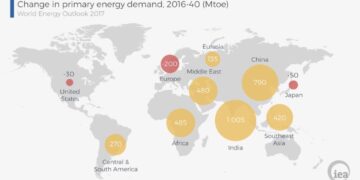New research published in ESA Journals reveals how the timing of seasonal ecosystem connections shapes the life-history strategies of salmonid fish populations. By examining the intricate linkages between aquatic and terrestrial environments throughout the year, scientists have uncovered how shifts in these ecological interactions influence growth, reproduction, and survival traits in salmonids. These findings shed light on the critical role of seasonal dynamics in driving population variation, offering fresh insights into the management and conservation of these iconic fish amid changing environmental conditions.
Seasonal Shifts in Ecosystem Connectivity Drive Life-History Diversity in Salmonid Populations
Recent research highlights how fluctuating connections within aquatic ecosystems influence the diversity of life-history strategies in salmonid populations. As seasonal changes reshape the availability of critical habitats-such as spawning grounds, rearing areas, and foraging sites-fish display remarkable plasticity in their migration timing, growth rates, and reproductive tactics. These dynamic linkages act as ecological filters, promoting a spectrum of survival strategies that help sustain population resilience amid environmental variability.
Key observations reveal the following drivers behind life-history variation:
- Timing of freshwater-seawater transitions: Early or late migration windows affect exposure to predation and food resource availability.
- Habitat accessibility shifts: Seasonal flooding or droughts open or close corridors, influencing dispersal and gene flow.
- Climate-driven temperature changes: Alter physiological development rates and spawning success, reshaping population structure.
| Season | Ecosystem Linkage | Life-History Response |
|---|---|---|
| Spring | Increased river-sea connectivity | Early smolt migration and rapid growth |
| Summer | Isolated freshwater habitats | Shift to resident freshwater strategies |
| Fall | Expanded floodplain access | Delayed spawning, multiple cohort overlap |
Understanding the Impact of Timing on Salmon Growth and Reproduction Strategies
Salmonid fish, such as the species explored in recent studies, demonstrate remarkable adaptability in their growth rates and reproductive strategies, largely influenced by the seasonal timing of their ecosystem interactions. The synchronization between freshwater and marine environments plays a pivotal role in shaping life-history traits, including size at maturity and spawning schedules. When resource availability peaks during critical growth windows, salmon can maximize energy uptake, resulting in enhanced survival probabilities and fecundity. Conversely, mismatched timing can trigger cascading effects, from delayed migrations to reduced reproductive output, underscoring the ecological importance of precise seasonal linkages.
Key factors affecting this timing-driven variation include:
- Temperature fluctuations that alter metabolic rates and developmental speed.
- Food resource pulses occurring at different stages of the salmon lifecycle.
- Hydrological changes impacting migration routes and spawning habitat accessibility.
| Timing Aspect | Primary Impact | Lifecycle Stage |
|---|---|---|
| Early Spring Migration | Increased growth rate | Juvenile to Smolt Transition |
| Summer Food Availability | Higher energy reserves | Marine Refeeding |
| Fall Spawning It looks like your table entry for “Fall Spawning” is incomplete. Here is a suggested completion for the row, continuing in the style of the previous entries: | ||
| Fall Spawning | Optimized reproductive success | Adult Spawning |
| Priority Action | Expected Benefit |
|---|---|
| Flow regime restoration | Improved spawning success |
| Riparian buffer enhancement | Lower stream temperatures |
| Real-time habitat monitoring | Timely adaptive management |
| Community-driven restoration | Increased habitat resilience |
Concluding Remarks
As researchers continue to unravel the intricate connections between ecosystem dynamics and species life histories, this latest study sheds vital light on how the seasonal timing of environmental linkages plays a critical role in shaping salmonid populations. Understanding these nuanced relationships not only enhances our grasp of fish ecology but also informs conservation efforts in the face of changing climates. As salmonids remain keystone species in many aquatic systems, insights like these underscore the importance of timing in the delicate balance of nature.































